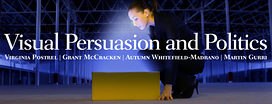In her latest post in this month’s conversation, Virginia Postrel points out that glamour’s greatest danger lies in the gap between the illusions it presents and the imperfect realities of life. One example she uses is of the dissatisfied young women—embodied by “perpetually enraged readers of Jezebel”—who rage at the gap between the illusion of conventional feminine beauty and their own flawed looks.
I’ll add a suggestion to the mix here: These women may well be reveling in a different sort of glamour, or rather, in one of glamour’s cousins. Narrative, at first glance, would seem to be what glamour is not—an arc, not a moment; a story, not a frame. But when a culture collects a narrative en masse, it adopts some of glamour’s sheen, and when a person’s lived experience fails to conform to the narrative at hand, the gap between the promise and reality can be just as maddening.
The conversation about women and beauty has taken on a narrative. Specifically, it’s conformed to a “therapeutic narrative”: a story in which a hero—or heroine, as it were—overcomes anguish in order to reach a place of understanding, perhaps even self-actualization. Central to the therapeutic narrative is the initial injury—in this case, ideal feminine beauty, and the failure of virtually every woman on the planet to embody it to the maximum. At the happy resolution of this narrative (there is no other kind of resolution to this narrative), we see the glamour of rebellion: the “kick-ass” woman who “lives by her own rules” and claims to reject the conventional beauty ideal. Ten years ago, she might have forwarded (long-debunked) memes about how Marilyn Monroe wore a size 16; today, she might post makeup-free selfies or post before-and-afters about magazine retouching on her Facebook wall. (Hell, she might run a blog entirely devoted to the sociology of beauty, comme moi.) Need I spell out that this warrior is as much a myth as that of the effortless beauty? But because its promise lies in eschewing a more obvious glamour, it’s seen as more attainable.
We know the therapeutic narrative has been glamourized because it has been picked up by at least one Fortune 500 company, with Unilever brand Dove embarking upon the decade-long “Campaign for Real Beauty.” It is, of course, a campaign for Dove, not for beauty of any sort, but its branches do a tremendous job of tapping into the vulnerabilities that saw this brand of narrative ensconced in the first place. Its 2004 breakout ad campaign featured billboards of “real women”—that is, women with full thighs or knock knees or curved bellies—in their underwear alongside the Dove logo. More recently, the company produced a commercial with a forensic sketch artist who drew women as they described themselves, and then as how a stranger described them. Surprise: The portraits based on self-description were less attractive than the ones coming from someone else’s perspective. But Dove isn’t the only company capitalizing upon the therapeutic narrative: Bare Escentuals ran an entire campaign based on models’ personalities, casting models based on questionnaires without ever seeing what they looked like. BeneFit ran an “inner beauty challenge.” And outside the realm of makeup, Jezebel itself—owned by one of the most successful new media companies out there, Gawker Media—made its name upon the ethos espoused in its tagline: “Celebrity, Sex, Fashion for Women. Without Airbrushing.”
All this would seem, at first blush, to have little to do with the larger framework of this month’s discussion: visual persuasion and politics. But here we can look to the still-relevant truths behind what may well be the Old Testament of the “body positive” movement: The Beauty Myth, the brilliant best-selling 1990 book by Naomi Wolf. Today, the tome is usually discussed as though it were the primary tool of instruction for alerting women to the ways they are manipulated by the mainstream media—indeed, the world at large—to feel never quite pretty enough, never quite thin enough, never quite enough enough. This it may well be. But in truth it’s a book about politics: about women’s engagement with the world and participation in the public sphere, and how beauty work is ultimately a distraction from the larger goals of feminism.
This, unfortunately, has not changed, even as women’s participation in the public sphere (including politics) continues to grow. What has changed is that we’ve added a meaty addendum to that distraction: We’re distracted not only by the beauty imperative, but by the backlash against the beauty imperative and the supposedly empowered vision of womanhood it promises. We’re distracted by the glamour of the therapeutic narrative. This wouldn’t be a bad thing in the least if more women’s vision extended beyond that point. But too often, it doesn’t. Pointing out magazine retouching doesn’t do much good if we treat it as the end point, not as a portal to a sturdier version of empowerment.
Third-wave feminists—actually, young women in general—are often dismissed as self-absorbed or trivial. I don’t wish to add to that claim, as I know it to be selective as well as false. What I can say—and I am aware of a degree of hypocrisy on my part, given that I mostly write about women and physical appearance—is that in directing so much of the public conversation about women to be about airbrushing and skinny models and the like, many a young woman is cutting her own vision short. The “perpetually enraged readers of Jezebel” that Postrel raises an eyebrow toward indeed too often wind up yoking themselves to the promise of imagery more than their sisters who accept those images unblinkingly. We’re wise to be on guard against the falsities of magazine images and the like, yes. But the images we’re on guard against wind up siphoning women’s energies from the public sphere, armor or not.

